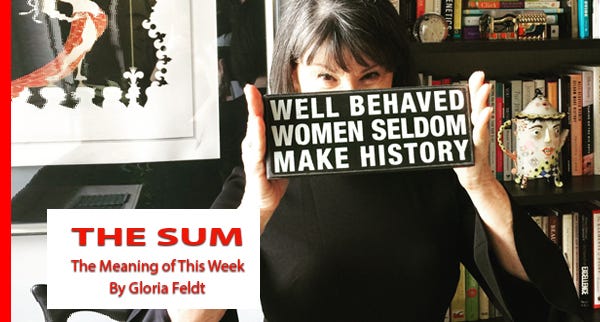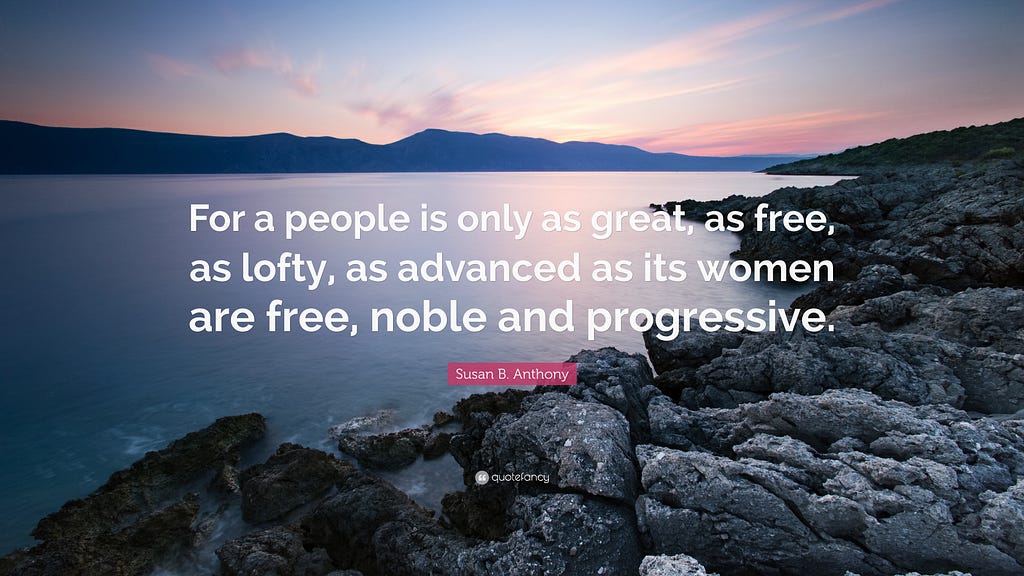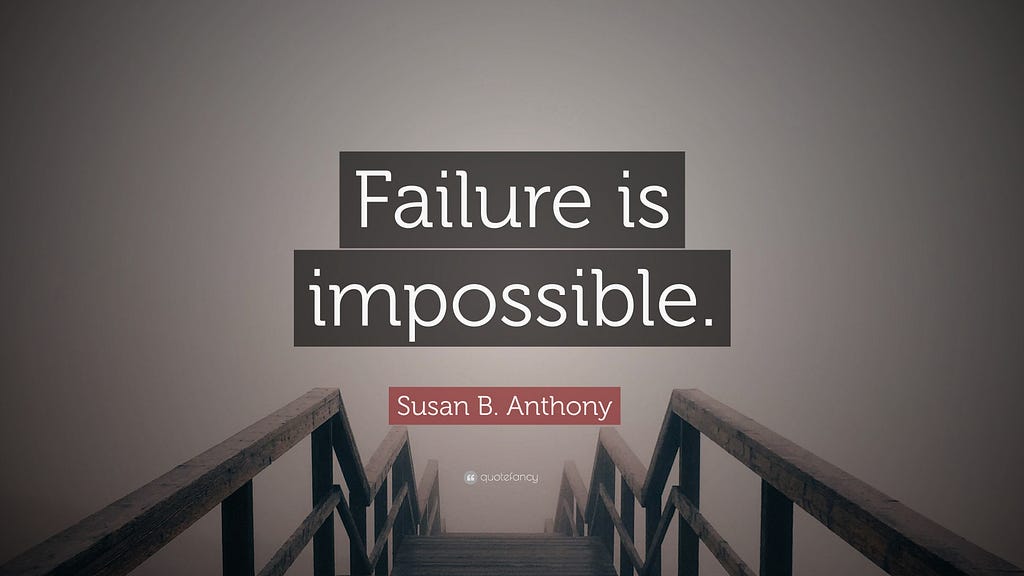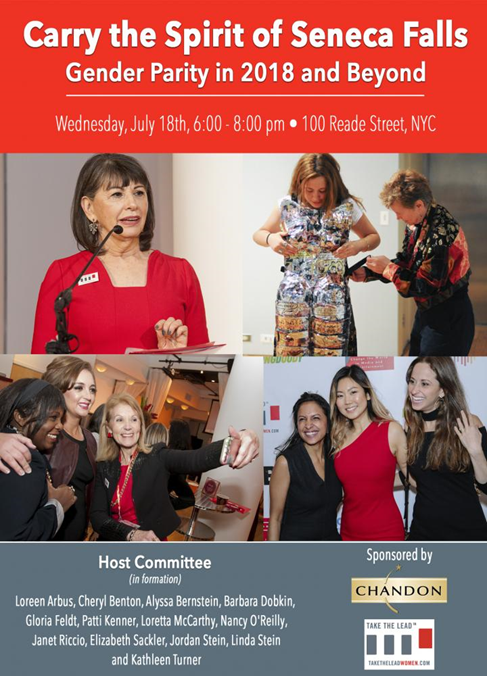From 0 to 50 in 177

Issue 57 — July 15, 2018
No, that’s not how many seconds it takes for a (very slow) car to accelerate to 50 miles per hour.

It’s how many years from the first U. S. women’s rights convention in Seneca Falls NY in 1848, to 2025 when I want to see not only full legal rights but also gender parity in leadership positions.
Think about what an enormous cultural shift that will be.
In historical perspective, it’s not surprising that progress seems so slow. At times we’ve even moved backward after making advances.
It’s also not surprising that the pushback has sometimes been severe or violent. When men perceive power as a finite pie instead of the infinite resource it actually is, fear of losing it sets in. It takes enormous courage to challenge ingrained norms.
That first small group of brave women and men, led by such boundary breakers as Susan B Anthony, Elizabeth Cady Stanton, Lucretia Mott, and Frederick Douglass, made the bold, world-changing declaration that women should have equal rights.

Quote Fancy; Photo credit: Frederico Bottos
American women had been on a slow ride toward equality since the nation’s founding, when Abigail Adams threatened her husband John that the women would rebel if the men drafting the Constitution failed to “remember the ladies and be more generous and favorable to them than your ancestors.”
The men didn’t comply with Abigail’s demands; in fact, John mocked her outright, saying the men would never accept this “despotism of the petticoat.”
Women in most states had no property rights, no means to support themselves, or even the right to protect themselves physically from husbands’ “unlimited power.”
Until the mid-1800’s as a result of that upstart women’s movement’s advocacy to change the world as they knew it, husbands were legally allowed, and expected, to chastise and control “their” women by inflicting corporal punishment.
And women had little recourse since their identities were legally merged with their husbands’ at marriage. Until, 1918, the Texas Constitution specifically said that anyone could vote except idiots, imbeciles, aliens, the insane, and women — just one example of how women were viewed.
Women wouldn’t get the right to vote for 144 years after independence was declared.
The American Society for the Prevention of Cruelty to Animals formed in 1866. It predates any organization preventing cruelty to women: in 1882, Maryland passed the first law making wife-beating a crime.
Not until 1994, after Anita Hill had sat courageously alone before powerful senators who treated her with such disdain that it outraged and activated women, did Congress pass the Violence Against Women Act, creating for the first time a federal right to sue an assailant for gender-based violence.
Hill gave us language for sexual harassment without which today’s #MeToo movement couldn’t have happened.
So bit by bit, we advance.
But sometimes there is a special window of opportunity. A moment of brilliant clarity. A time when the forces converge to accelerate the speed of progress. We are in such a time now.
Finally, it’s clear to all that harassment comes from power imbalance and the misuse of power by those privileged to have more of it. The only sustainable solution is righting that imbalance with gender equality. In all sectors and elements of life and work.
Can we be any less bold today than Anita Hill or Susan B Anthony?
I don’t think we can afford to be.

The participants of that epoch-making meeting in 1848 would be in awe of the surge of women running for office this year. They’d find it hard to believe the paid workforce is almost half women and that 40% of managers are women, even though we have yet to crack anywhere near that level in the executive suite and the percentage of female Fortune 500 CEO’s dipped to 24 this year.
Yet despite all those advances, women still hold just 20% of top leadership positions and earn 20% less than men. Far too many must say #MeToo, and women’s rights are still not written explicitly into the U. S. Constitution, with the exception of the right to vote.
So we have our work cut out for us if we are going to get to leadership parity by 2025. Take The Lead is creating a movement of movements to make sure we reach that goal.
If you’re in New York July 18, join Take The Lead to carry forward the spirit of Seneca Falls with big announcements about our powerful 50 Women Can Change the World programs. We’ll launch finance this fall, journalism and human resources in early 2019, and continue with cohorts in nonprofit organizations, healthcare leadership, and (fingers crossed, looking for funders) in tech, and more.
It’s incredibly exciting. There are a few tickets left, so if you hurry you can be part of the action to accelerate leadership parity to 50/50 by 2025.

PS: We’re accelerating faster than ever, as exemplified by 24 year old Brehanna Daniels, NASCAR’S first African American female pit crew member. Peel out, Ladies!
